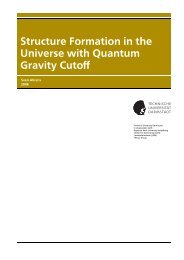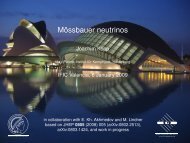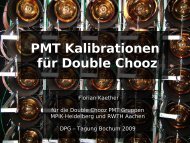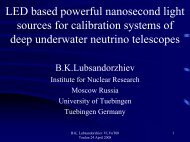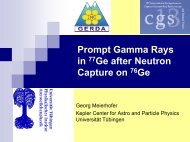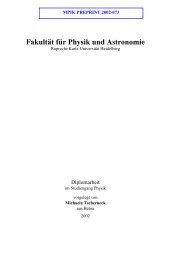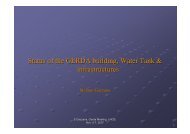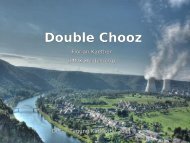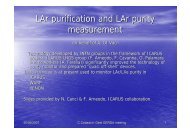Natural convection in enclosures with localized heating from below ...
Natural convection in enclosures with localized heating from below ...
Natural convection in enclosures with localized heating from below ...
Create successful ePaper yourself
Turn your PDF publications into a flip-book with our unique Google optimized e-Paper software.
HFF<br />
10,5<br />
520<br />
Figure 1.<br />
Geometry and boundary<br />
conditions of the<br />
problem<br />
analyzed steady natural <strong>convection</strong> <strong>in</strong> an enclosure heated <strong>from</strong> <strong>below</strong> and<br />
symmetrically cooled <strong>from</strong> the sides. The effects of the Rayleigh number, the<br />
Prandtl number and aspect ratio on the flow and energy transport were<br />
determ<strong>in</strong>ed. Ramos and Milanez (1998) performed an experimental and<br />
numerical analysis for natural <strong>convection</strong> flow caused by heat sources<br />
dissipat<strong>in</strong>g energy at a constant rate simulat<strong>in</strong>g electronic components<br />
mounted at the bottom surface of a cavity symmetrically cooled <strong>from</strong> the sides<br />
and <strong>in</strong>sulated at the top.<br />
In the present study, natural <strong>convection</strong> <strong>in</strong> a square enclosure <strong>with</strong> <strong>localized</strong><br />
heat<strong>in</strong>g <strong>from</strong> <strong>below</strong> and symmetrical cool<strong>in</strong>g <strong>from</strong> the sides is considered. As it<br />
appears <strong>from</strong> the exist<strong>in</strong>g literature, this study is the first attempt at study<strong>in</strong>g<br />
the natural <strong>convection</strong> phenomenon <strong>in</strong> an enclosure under the above mentioned<br />
thermal conditions. Symmetrical cool<strong>in</strong>g <strong>from</strong> the sides is expected to be an<br />
efficient cool<strong>in</strong>g option, while partial heat<strong>in</strong>g at the lower surface simulates the<br />
electronic components such as chips. S<strong>in</strong>ce natural <strong>convection</strong> flows <strong>in</strong><br />
<strong>enclosures</strong> arise <strong>in</strong> many eng<strong>in</strong>eer<strong>in</strong>g processes, the results to be obta<strong>in</strong>ed here<br />
may be applicable to other fields of <strong>in</strong>terest. The effects of the Rayleigh number<br />
and the nondimensional isothermal heat source length on the fluid flow and<br />
heat transfer are determ<strong>in</strong>ed. For = 0, which means that the whole part of the<br />
lower wall is heated, the boundary conditions applied here are identical to those<br />
considered by Ganzorolli and Milanez (1995).<br />
Analysis<br />
Consider the motion of a viscous fluid <strong>with</strong><strong>in</strong> a square enclosure <strong>with</strong> equal<br />
length and height, L=H, which is depicted <strong>in</strong> Figure 1. The size of the<br />
y<br />
T c<br />
x<br />
I<br />
T H<br />
adiabatic<br />
L<br />
adiabatic<br />
T c<br />
H



